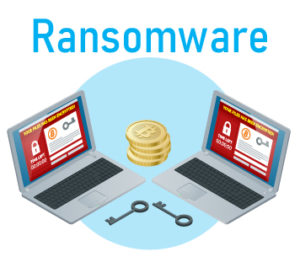OEM (Original Equipment Manufacturing) and ODM (Original Design Manufacturing) are two important terms related to the manufacturing and electronics industries. These terms can sometimes be confusing to people who are new to these industries. Small companies or startups hire some resources from OEMs and ODMs to produce and design their final products.
What is OEM?
OEM (Original Equipment Manufacturer) is a term that describes the network of relationships among hardware component manufacturers, IT software vendors, IT hardware suppliers, and channel partners, such as distributors and resellers. The term Original Equipment Manufacturer used to refer to a company that originally built a particular product, which was then sold to other companies for re-branding and resale. At this point, this term has become a label used to describe different companies and relationships between companies. OEM relationships are very often similar between companies that bring IT products to market. It is not uncommon for a company to act as an OEM and simultaneously sell systems to other OEMs. This fluidity in the IT world creates unclear relationships because they can easily confuse product designers, resellers and manufacturers.
On the other hand, we can say that the OEM product is made according to the customer’s product specification. For example, any product tailored to the design, material, dimensions, functions or even colors can be classified as OEM.
OEM Main Benefits
- It’s hard to duplicate your product
- The intellectual property of the product is yours
- You can customize the product to your requirements
What is ODM?
ODM (Original Design Manufacturer) is a term that describes a company that takes the original specifications of another company or individual and builds a product designed to the exact specifications based on it. ODM, as a way of doing business, enables a company to market a product without the need for complete hardware design, and therefore without investing in manufacturing facilities. The company that created the specification usually retains ownership of the design. The best example of classic ODM is the white box server, (white box server it’s a data center computer not manufactured by a well-known brand vendor). ODM usually builds equipment from commercial components and may be slightly adapted to specific environments. The advantage of ODM is that it can build and deliver custom servers faster, and it can also offer a parts protection guarantee.
ODM products, often referred to as “private label products”, can be branded with a customer logo.
ODM Main Benefits
- Saves money and time
- Faster market development than OEM
- The company is not responsible for the creation of new equipment
- Dealing with trusted manufacturers reduces the chances of product duplication
OEM Hardware
The use of the term OEM in the IT industry’s hardware segment has several meanings. OEMs can best be described by the most famous companies such as Hewlett Packard Enterprise (HPE), HP Inc., Dell, EMC, and Lenovo. These aforementioned companies are well-known hardware manufacturers who buy components from other companies and sell complete systems under their own designation. Such companies procure microprocessors, hard drives, and other equipment from OEM parts suppliers, who see them as OEM customers. Component suppliers often create an OEM product as well as retail versions of their offering. Hard disk sellers, for example, produce bare hard drives for OEM customers and retail hard drives that come in an accessory box, such as cables and installation instructions. Original brand manufacturers can also purchase entire systems from Original Device Manufacturers (ODMs), which produce various computing devices from laptops to servers. ODMs such as Foxconn Electronics Inc. and Quanta Computer Inc. historically have sold systems to OEMs, but in recent years, some ODMs have begun selling directly to large end customers.
OEM Software
Software companies also sell OEM versions of their products to large OEMs or smaller system vendors who embed software in their own products. Third-party operating systems and applications that deliver to end customers are pre-installed on a multitude of products. The best examples of OEM software are desktop computers, laptops, tablets and smartphones. OEM software arrangements can also be found between software developers as well as between developers and hardware companies. The best example of this is VMware, as it allows OEM partners to incorporate some of their virtualization products into their software offering. Also, Autodesk enables third-party solution developers or third-party software vendors to develop custom applications based on Autodesk’s computer design software.
OEM VS ODM
When it comes to OEM and ODM Vs, it is necessary to consider several aspects, including the advantages and disadvantages of both types of production system.
OEM companies make products based on designs provided by another company. The OEM produces only what the customer requires. This way both companies benefit from each other. In some cases, companies rarely have the machines needed to produce large quantities of products on time, and outsourcing production may be cheaper compared to in-house production. So, these companies outsource production to OEM companies.
ODM, on the other hand, designs and manufactures the products themselves. These products are often known as Empty Products or White Label. The buyer company can re-brand and sell them as their products.
In most OEM products, customers typically require the production of specific parts or machine parts that are based on a particular design. The customer assembles and sells these parts of the product under the trademark. Most of these products are available at competitive prices because the costs incurred during the OEM manufacturing process are relatively lower.
ODM companies, on the other hand, produce the kind of product you need. But only in these products can changes be neglected. However, customers can benefit from such suppliers because there is almost no need to design products and spend time on research and development. Customers can use the expertise of ODM companies that produce bulk goods for the benefit of smaller companies. There are basically two types of categories in the production of ODMs, namely private and white label. Private labeled products are finished products that are sold to a particular seller. White label products, on the other hand, are generic products sold to different retailers, sold under different brands.
OEM products are basically components that a manufacturer sells based on a customer specification, whereas ODM products are finished or pre-designed products that will be sold with the buyer’s company brand.
ODM products are complete and finished products compared to OEM products.
Author: Miloš Denić






